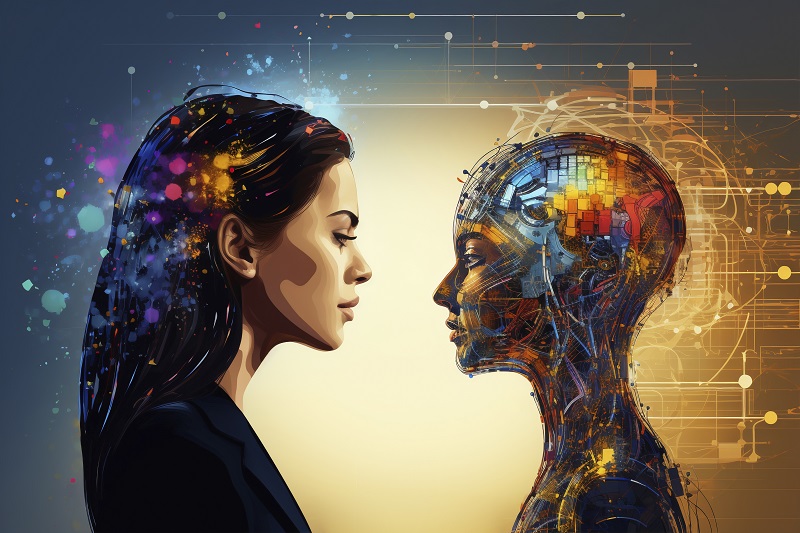
Artificial intelligence (AI) has been dramatically changing the landscape of technology. One of the most fascinating areas where AI is making a significant impact is in natural language processing (NLP), particularly concerning relationships. Whether it's personal, professional, or even human-computer interaction, AI-powered communication tools are revolutionizing how we understand and engage with each other.
The Evolution of Natural Language Processing in Relationships
Natural language processing has reached new heights over the last few years, driven by advancements in machine learning and text analysis. From basic automated responses to complex semantic analysis, NLP now allows machines to interact with humans more naturally and effectively.
The Rise of Sentiment Analysis
Sentiment analysis plays a crucial role in understanding how people feel during their interactions. By analyzing words and phrases, AI can determine whether a message conveys positive, negative, or neutral emotions. This capability is invaluable for enhancing customer service, moderating online forums, and even improving personal relationships.
Imagine having an AI that identifies when a conversation might be escalating into conflict and suggests ways to diffuse the situation. Sentiment analysis can help create healthier, more constructive communication patterns both at home and in the workplace.
Entity Recognition and Relationship Extraction
Another fascinating application of NLP is entity recognition, which involves identifying specific entities in a text such as names, dates, and locations. In tandem with relationship extraction, this technology can map out intricate connections between different entities within a dialogue. For instance, in a corporate setting, entity recognition can streamline business communication by automatically highlighting key elements within emails or reports.
This kind of text analysis aids in filtering out irrelevant information, allowing individuals to focus on what really matters. It's like having a personal assistant who never misses critical details.
Bridging Cultural Gaps with Language Translation
Language translation powered by NLP is another groundbreaking development in breaking down communication barriers. With real-time, accurate translations, people from different linguistic backgrounds can communicate effortlessly. This is particularly beneficial in multicultural work environments or international relationships, where seamless communication is essential.
Human-computer interaction also benefits from advanced ai-girlfriends.ai and language translation capabilities, making devices and services more accessible to non-native speakers. Modern translators not only convert text but also maintain the original context and emotion of the communication, resulting in more meaningful conversations.
Semantic Analysis and Its Implications
Semantic analysis goes beyond simple word matching; it delves into the meaning behind the words. Understanding the context and intent behind statements enables AI to generate more relevant and helpful responses. Over time, this leads to more satisfying interactions between humans and machines.
In personal relationships, semantic analysis can offer nuanced insights into emotional dynamics, helping individuals better understand and respond to each other's needs. On a business level, companies can analyze customer feedback with greater depth and accuracy, leading to improved products and services.
Real-World Applications and Examples
It's always inspiring to see these technological advancements applied in real-world scenarios. Let's delve into some specific instances where AI-driven NLP is already making waves:
- Customer Service: Many businesses employ chatbots powered by NLP to handle customer inquiries efficiently. These bots understand customer intent and provide rapid, accurate responses.
- Mental Health Support: AI solutions are being designed to recognize signs of anxiety or depression from textual cues in messages, aiding mental health professionals in early diagnosis.
- Team Collaboration Tools: Apps like Slack incorporate NLP features to enhance team communication, ensuring everyone is on the same page.
The Future of AI-Powered Communication
The horizon looks incredibly promising as technologies continue to evolve. Future developments could lead to devices that understand not just our words but also our gestures, expressions, and tone of voice, offering truly holistic human-computer interaction.
Machine learning algorithms will become increasingly adept at understanding the intricacies of human language, rendering our digital interactions indistinguishable from those with actual human beings. Imagine synthetic companions that serve as therapists, coaches, or even friends who always know exactly what to say.
Challenges and Ethical Considerations
No discussion about cutting-edge technology would be complete without addressing potential challenges and ethical dilemmas. While NLP opens up exciting possibilities, it also raises questions around privacy, data security, and misuse of information. Ensuring that these systems respect user confidentiality and operate transparently must be a priority.
Developers face the ongoing challenge of reducing biases in AI models. Language inherently contains cultural and societal biases, and if these aren't appropriately managed, they can be amplified by AI, causing more harm than good.
Innovative Trends Shaping the Future
The field of NLP is continuously evolving, with several innovative trends set to redefine what's possible regarding AI and relationships.
Context-Aware Computing
Context-aware computing aims to develop systems that adapt based on the situational context. In practice, this means AI could differentiate between formal and informal settings, modifying its behavior accordingly. Such adaptability enhances the effectiveness of AI across various relationship dynamics, from professional to intimate interactions.
Emotional Intelligence in AI
Future NLP systems are likely to exhibit higher levels of emotional intelligence, allowing them to interpret and react to human emotions with greater sophistication. An emotionally aware AI could revolutionize fields like psychotherapy, offering support that's empathetic and genuinely helpful.
Multi-Modal Interactions
Combining text, speech, and visual inputs to create richer and more interactive experiences is another burgeoning trend. Multi-modal AI systems have the potential to understand and respond to users in more comprehensive ways, providing a fuller picture of human intention and sentiment.
Practical Tips for Developers
If you're a developer looking to leverage NLP in your projects, consider the following practical tips:
- Start small: Begin with implementing basic features like sentiment analysis before moving onto more complex functionalities.
- Use existing libraries: Explore established NLP libraries like NLTK, SpaCy, or Hugging Face Transformers to speed up development.
- Justify the use-case: Ensure that integrating NLP genuinely adds value to your application rather than becoming an overly complicated feature.
- Maintain transparency: Be clear with users about how their data is being used, especially in sensitive contexts involving personal and emotional information.
By adopting these tips, you can successfully integrate NLP into your projects, creating more impactful and engaging experiences for all users.















